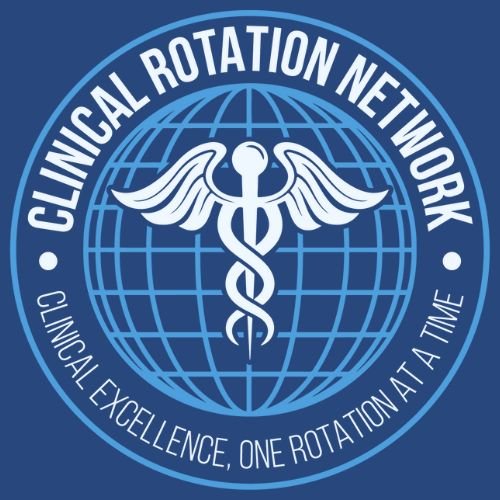Advancements in Medical Training Techniques: Shaping the Future of Healthcare
The field of medicine is in a perpetual state of evolution, driven by discoveries in science, technology, and pedagogy. As healthcare challenges grow more complex, so too must the methods used to train the next generation of medical professionals. Gone are the days when medical education relied solely on textbooks, lectures, and apprenticeships. Today, a wave of innovation—from artificial intelligence (AI) to virtual reality (VR)—is revolutionizing how clinicians learn, practice, and refine their skills. This blog post explores the groundbreaking advancements in medical training techniques that are setting new standards for excellence in healthcare.
1. Simulation-Based Learning: Bridging Theory and Practice
Simulation-based training has emerged as a cornerstone of modern medical education. By replicating real-world clinical scenarios, simulations allow learners to practice decision-making, technical skills, and teamwork in a risk-free environment.
- High-Fidelity Manikins: Lifelike manikins like Laerdal’s SimMan and CAE Healthcare’s models simulate physiological responses, enabling trainees to practice procedures such as intubation, CPR, and emergency care. These manikins can mimic complications like allergic reactions or cardiac arrest, forcing students to adapt dynamically.
- Surgical Simulators: Platforms like the Touch Surgery app and the da Vinci Surgical System offer trainees hands-on experience in minimally invasive procedures. Surgeons can rehearse complex operations, such as laparoscopic surgeries, in a controlled setting, reducing errors in actual operations.
- Interprofessional Training: Simulations often involve multidisciplinary teams, fostering collaboration between doctors, nurses, and pharmacists. For example, Johns Hopkins Medicine uses simulation centers to train teams in crisis management, improving communication during emergencies.
Why it matters: Studies show simulation training reduces medical errors by up to 30% and enhances retention of clinical skills compared to traditional methods.
2. Virtual and Augmented Reality: Immersive Learning Redefined
VR and augmented reality (AR) are pushing the boundaries of medical education by creating immersive, interactive environments.
- Virtual Reality (VR): Platforms like Osso VR and Precision VR allow trainees to perform virtual surgeries, from orthopedic procedures to neurosurgery. In 2022, Stanford University reported that VR-trained surgeons completed procedures 20% faster and with 38% fewer errors than those trained conventionally.
- Augmented Reality (AR): Tools like Microsoft HoloLens overlay digital anatomy onto physical models, enabling students to explore 3D reconstructions of organs. AR is also used in real-time guidance during procedures; for instance, ProjectDR projects CT scans onto a patient’s body, aiding in needle placement.
- Remote Learning: VR enables students worldwide to access elite training programs. The University of Cambridge’s VR anatomy classes, for example, have democratized access to cadaver-free dissection experiences.
The impact: A 2023 study in JAMA Surgery found VR users scored 230% higher on skill assessments than peers using traditional methods.
3. AI and Machine Learning: Personalized Education at Scale
AI is transforming medical training into a tailored, data-driven experience.
- Adaptive Learning Platforms: AI algorithms analyze individual performance to customize curricula. Platforms like Osmosis and Kaplan’s i-Human Patients adjust content difficulty based on a student’s progress, focusing on weak areas.
- Chatbots and Virtual Patients: AI-driven chatbots simulate patient interactions, helping trainees hone diagnostic skills. For example, Babylon Health’s AI chatbot quizzes users on symptoms and treatment plans, offering instant feedback.
- Predictive Analytics: Institutions like the Cleveland Clinic use AI to predict which trainees might struggle with specific competencies, enabling early intervention.
The benefit: Personalized learning reduces training time by up to 50% while improving outcomes, as noted in a 2021 NEJM report.
4. Competency-Based Medical Education (CBME): Mastery Over Metrics
CBME shifts focus from time-based training to skill mastery, ensuring graduates meet rigorous standards.
- Milestone Assessments: The Accreditation Council for Graduate Medical Education (ACGME) mandates competency milestones, such as effective communication or technical proficiency. Trainees advance only after demonstrating mastery.
- Entrustable Professional Activities (EPAs): Learners are evaluated on real-world tasks, like managing a ICU patient. The University of Toronto reported a 40% increase in resident readiness after implementing EPAs.
Why it works: CBME reduces burnout by allowing self-paced learning and ensures clinicians are practice-ready.
5. Telemedicine Training: Preparing for Digital Healthcare
The rise of telehealth demands new competencies, from virtual diagnostics to digital empathy.
- Virtual Patient Interactions: Programs like the American Medical Association’s Telehealth Initiative train clinicians in conducting remote consultations, including interpreting visual cues via video.
- Digital Communication Skills: Emory University integrates modules on building rapport online and managing cybersecurity risks.
- Hybrid Simulation: Trainees practice switching between in-person and virtual care, preparing for hybrid models.
The future: By 2025, 80% of medical schools will include telehealth curricula, per the AAMC.
6. Ethical Considerations: Balancing Innovation and Integrity
As technology reshapes training, ethical challenges must be addressed:
- Patient Privacy: VR/AI systems using real patient data require robust encryption and anonymization.
- Bias in AI: Algorithms trained on non-diverse datasets may perpetuate disparities. Initiatives like MIT’s Fair ML aim to create equitable AI tools.
- Human Touch: Over-reliance on tech risks eroding empathy. Programs like Harvard’s “Narrative Medicine” emphasize storytelling to preserve compassionate care.
Conclusion: A New Era of Medical Excellence
The fusion of technology and pedagogy is creating a generation of clinicians who are more skilled, adaptable, and patient-centered than ever before. From VR operating rooms to AI tutors, these advancements promise to elevate global healthcare standards. However, success hinges on balancing innovation with ethical vigilance and human connection. As institutions embrace these tools, the future of medicine looks not just brighter—but smarter, safer, and more inclusive.








